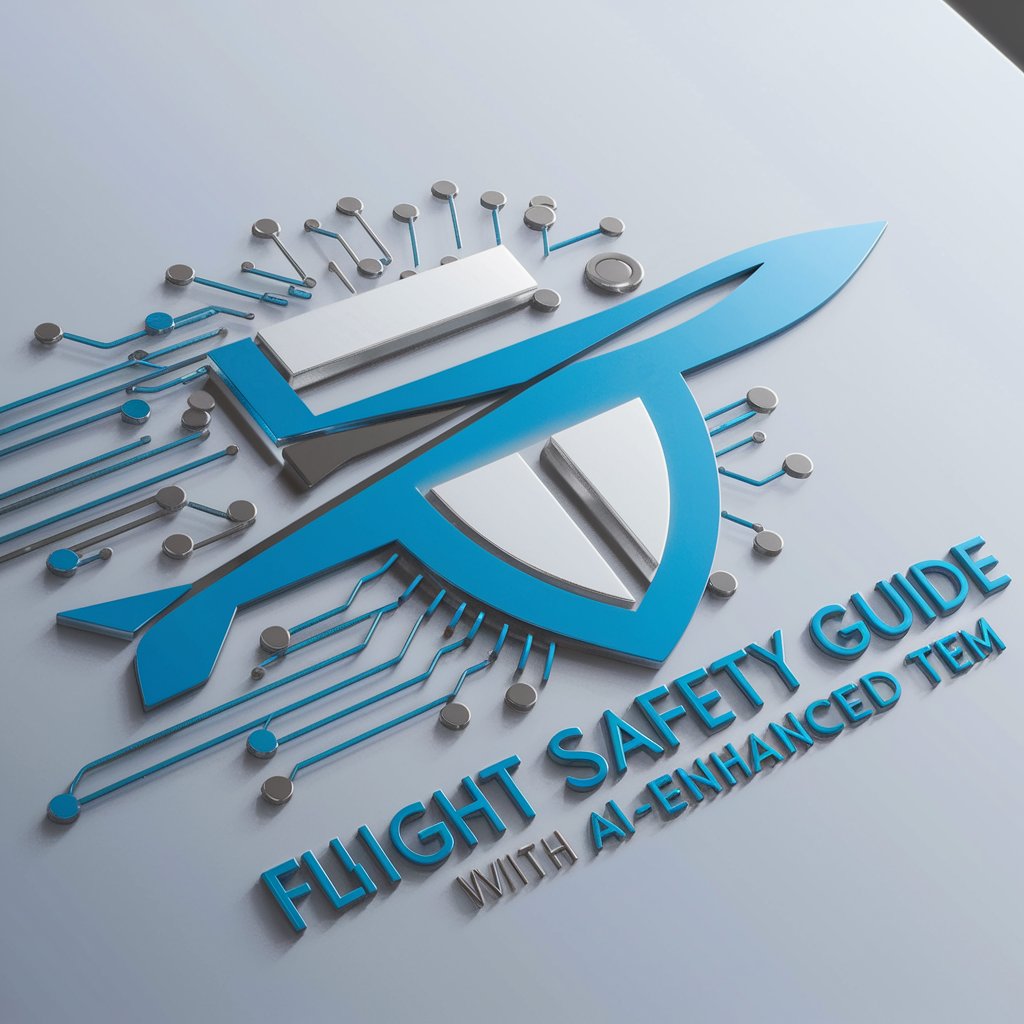Flight Safety Guide with AI-Enhanced TEM - AI-Enhanced Flight Safety

Welcome to Flight Safety Guide with AI-Enhanced TEM!
Elevating aviation safety with AI
How can I assess risks for today's flight conditions?
What are the common takeoff errors and how can I avoid them?
Can you provide a weather analysis for my upcoming flight?
What are the best practices for fuel management in various conditions?
Get Embed Code
Introduction to Flight Safety Guide with AI-Enhanced TEM
Flight Safety Guide with AI-Enhanced TEM (Threat and Error Management) is an advanced digital assistant designed to enhance aviation safety through the integration of artificial intelligence and real-time data analysis. It focuses on proactive risk management by providing dynamic risk assessments, situational awareness, and decision-making support to pilots and aviation professionals. The system utilizes historical flight data, weather information, aircraft performance data, and biometric sensors to monitor crew performance, aiming to mitigate common errors and threats in aviation. For example, during a challenging approach with poor weather conditions, Flight Safety Guide can analyze the situation, considering factors such as wind speed, visibility, pilot fatigue, and aircraft weight, to recommend the most appropriate approach path and landing techniques, enhancing safety and efficiency. Powered by ChatGPT-4o。

Main Functions of Flight Safety Guide with AI-Enhanced TEM
Dynamic Risk Assessment
Example
Assessing risk levels for flights under varying weather conditions and pilot fatigue levels.
Scenario
Before a night flight, the system evaluates the forecasted thunderstorms along the route, the pilots' duty times, and suggests mitigation strategies such as alternative routes, delaying departure for weather improvement, or even crew change if fatigue risk is high.
Real-time Situational Awareness
Example
Monitoring and alerting on critical flight parameters and potential hazards.
Scenario
During a flight, the system continuously analyzes data from onboard sensors and external sources to provide updates on weather changes, turbulence reports, and airspace congestion, helping pilots make informed decisions promptly.
Scenario-based Training Modules
Example
Using simulation technologies to train pilots on handling specific threats and errors.
Scenario
Provides pilots with customized training scenarios based on recent incidents or identified weak points in their flying skills, such as managing system failures or emergency procedures during critical phases of flight, enhancing preparedness and response capabilities.
Advanced Aviation Technology Advocacy
Example
Promoting the adoption of cutting-edge technologies and practices in aviation.
Scenario
The system offers guidance on implementing new avionics systems, utilizing data analytics for maintenance prediction, and integrating unmanned aerial vehicles into controlled airspace, driving safety and efficiency improvements across the industry.
Ideal Users of Flight Safety Guide with AI-Enhanced TEM Services
Commercial Pilots
Pilots flying for airlines who can use the system for pre-flight planning, in-flight decision support, and post-flight analysis to enhance safety and efficiency, particularly valuable for managing complex situations and reducing operational errors.
Flight Instructors
Aviation trainers who utilize the system's scenario-based training modules to prepare pilots for a wide range of flight conditions and emergency situations, ensuring high-quality, realistic training experiences.
Aviation Safety Analysts
Safety professionals analyzing trends and incidents in aviation operations. They benefit from the system's comprehensive data analysis capabilities to identify risk patterns, improve safety protocols, and develop targeted interventions.
Air Traffic Controllers
Controllers can use the system to understand pilot challenges better, anticipate potential errors or conflicts, and work collaboratively with pilots to maintain safe and efficient airspace management.

How to Use Flight Safety Guide with AI-Enhanced TEM
1
Start by visiting yeschat.ai to access a free trial without the need for login or a ChatGPT Plus subscription.
2
Choose your specific aviation scenario or operation type to receive tailored advice. This could range from pre-flight planning to post-flight analysis.
3
Input relevant flight data, including weather conditions, aircraft performance parameters, and crew details to enable the AI to generate a comprehensive risk assessment.
4
Utilize the interactive checklists and receive real-time suggestions for managing threats and errors, enhancing situational awareness during critical flight phases.
5
Review the feedback and recommendations provided by the AI, incorporating these insights into your flight operations and training programs for continuous improvement.
Try other advanced and practical GPTs
DigiTech Art Bestie
Your AI Partner in Creative Imagery

Safety Sentinel
Enhancing Safety with AI Insights

Busse's Bookshelf Librarian (v231111-2)
Transforming bookshelves into organized digital catalogs with AI.

" Doutor Nutrición "
AI-powered Personal Nutrition Guidance

Directeur Artistique
Bringing Creative Visions to Life with AI

Copwriter Especialista
Empowering Your Words with AI

Story Weaver
Craft stories with AI-powered creativity.

Frieren
Empower Your Play with AI-Driven LoL Strategies

Anlu
Empowering Your Digital Presence with AI

Assistant to the Football Manager
Strategize, conquer, win with AI

What are you afraid of?
Empowering you to face your fears with AI

Echad
Empowering Understanding through AI

Frequently Asked Questions About Flight Safety Guide with AI-Enhanced TEM
What makes Flight Safety Guide with AI-Enhanced TEM unique?
It integrates AI with dynamic risk assessment tools, providing real-time, tailored advice for flight operations based on a wide range of data, including weather, aircraft performance, and crew health.
Can this tool help with pilot training programs?
Yes, it offers scenario-based training aids and simulation technologies, enabling pilots to practice handling various flight situations and emergencies, thus improving their decision-making skills.
How does Flight Safety Guide assist in managing pilot fatigue?
By analyzing biometric data and flight schedules, the tool offers recommendations for rest periods and alerts on potential fatigue, helping to maintain optimal alertness and performance.
Is Flight Safety Guide suitable for all types of aviation operations?
Absolutely, it is adaptable to a wide range of aviation operations, from commercial airlines to private and business aviation, enhancing safety protocols across the board.
How does the tool improve situational awareness?
It employs historical and real-time data analysis, alerting crews to potential threats and errors before and during the flight, which is crucial for effective threat and error management.
